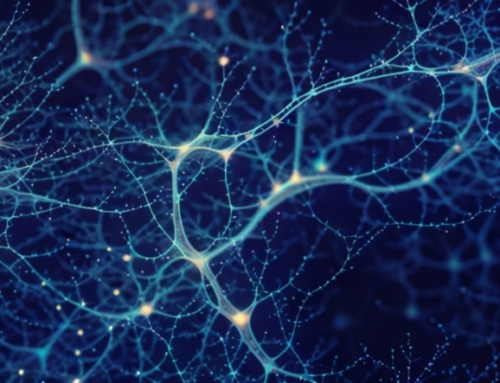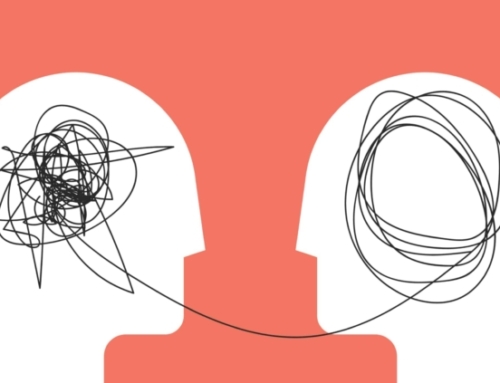I received a request from a resident to “explain psychotherapy in a big picture way.” Haha. Sounds like fun. I won’t try it today, but I’ll dip my toe in the following way: I’ll address the ways that distressing thoughts, primarily depressive and anxiety generating and maintaining ones, can be addressed.
First, let’s describe distressing thoughts by their features. They are often automatic, meaning that they arise in the mind easily in response to a broad range of circumstances that act as triggers and they also arise during quiet times, as if the mind is always already pre-occupied by them and quiet times give them the space to once again make themselves known. Given the ease with which they occur, the range of circumstances that trigger them, and their seeming ever-presence close to consciousness, it follows that these thoughts recur frequently. Since their content is generative of depressive or anxious feelings, their frequent presence leads to frequent dysphoric emotions. Next, distressing thoughts are often illogical and counterproductive. As we’ve learned from cognitive theory, they can be catastrophizing, personalizing, or over-generalizing. They can presume the attitudes and thoughts of other people – often as being negative, judgmental and rejecting – without a strong base of evidence. They can predict the future in dire ways and interpret the past in dark ways. Next, these distressing thoughts are often preconscious, meaning the person having them is not fully aware of having them. One reason for this is that these thoughts, by the nature of their content, trigger distress. This distress follows almost immediately the thoughts and draws attention to itself and away from the initiating thoughts. And last, these distressing thoughts arise from underlying core beliefs, such as “I am unlovable” or “All people are in it for themselves and can’t be trusted” and from underlying cognitive biases, such as attentional, attribution, and other interpretation biases.
Now let me describe different ways distressing thoughts can be addressed in therapy.
- Cognitive Restructuring: This technique is the core intervention of cognitive therapy. In step one, the patient is educated and taught to identify the triggering thought and to categorize or label it as, for example, “fortune-telling” or “all-or-nothing” thinking. In step two, the patient is taught to challenge the underlying assumptions and core beliefs behind that thought. For example, if the patient finds the recurrent thought, one that arose after a romantic breakup, to be “I’ll never find anyone who loves me,” the patient is asked to list all the successful relationships she or he has had and continues to have, thus challenging the biases inherent in that belief.
- Distancing and Acceptance: These techniques are used in mindfulness-based therapies such as Mindfulness Based Cognitive Therapy, Acceptance and Commitment, and Dialectical Behavior Therapy. In this range of techniques, rather than challenging one’s distressing thoughts, the goal is to view them as passing contents of consciousness that do not require a response. One can imagine these thoughts as leaves on a stream coming into view and passing down the stream. One can then be in a position to experience the fact that “I am not my thoughts.”
- Insight orientation: These techniques treat thoughts and emotions as sources of information. In CBT, the most common approach is to challenge the thoughts, as if one were engaged in a debate or argument. In mindfulness therapies, the common approach is to accept their presence and not necessarily engage them further. In insight-oriented therapies, such as psychodynamic, schema, and transference-focused therapies, the aim is to come to terms with these thoughts and understand their meanings and origin. In psychodynamic therapy the patient will be encouraged to understand the causes and meanings of the thoughts and core beliefs. This often entails identifying early life experiences that contributed to forming these beliefs about oneself and the world and to the emotions that often arise. The therapy often involves getting in touch with how those formative experiences continue to play out in one’s current life, including in one’s worldviews, relationships, and even work or school performance. In transference-focused therapy the patient’s attention is drawn to their responses, including their emotional, behavioral, and cognitive responses, during the therapy session itself. In effect, the relationship between the clinician and patient instantiated in the session’s interactions, brings forth the issues that are distressing to the patient or limiting their life successes. And in schema therapy, the focus is on identifying the schema, or core belief complexes, that drive the patient’s responses. Maladaptive schemas include defectiveness schema, abandonment schema, and entitlement schema. There are 18 of them organized into 5 categories. Interventions include empathic confrontation and limited reparenting.
- Breaking the State: People who are depressed or anxious often believe they are depressed or anxious “all the time.” But often they are not. They usually move in and out of dysphoric and non-dysphoric states through the day. Because they often label themselves as “depressed,” they come to believe they are depressed all the time by virtue of being “a depressed person” or “in a depression.” So, given the fact that people are rarely depressed or anxious all the time, they can be guided to recognize when they are in the anxious state, for example, and to take counteractive measures. One intervention for distress is TIPP and has been incorporated into DBT. It means Temperature, Intense exercise, Paced breathing, and Paired muscle relaxation. The first step involves holding one’s breath and placing one’s face in cold water or, alternatively, placing an ice pack against the face. This triggers the mammalian diving reflex which activates the parasympathetic nervous system which, in turn, leads to slowed breathing and relaxation. There are many other techniques to break state, such as distraction, behavioral activation, and opposite action.
This was a brief and incomplete review presented with the goal of showing that for any symptom a patient presents with there are many different interventions available to address it. Some of these interventions can be completed in a short amount of time, even during a 20-30 minute appointment, and also many of them can be taught to the patient to do on their own. So, this recognition opens up the range of possibilities of interventions we can incorporate into our armamentarium.
Thanks and take care.
Dr. Jack
Language Brief
“We are never devoid of distresses; our peace of mind depends on our heart’s way of accepting the strife” – Munia Khan
“If you are distressed by anything external, the pain is not due to the thing itself, but to your estimate of it; and this you have the power to revoke at any moment.”” – Marcus Aurelius
“The most beautiful people we have known are those who have known defeat, known suffering, known struggle, known loss, and have found their way out of the depths […] Beautiful people do not just happen.” – Elisabeth Kübler-Ross







Leave A Comment